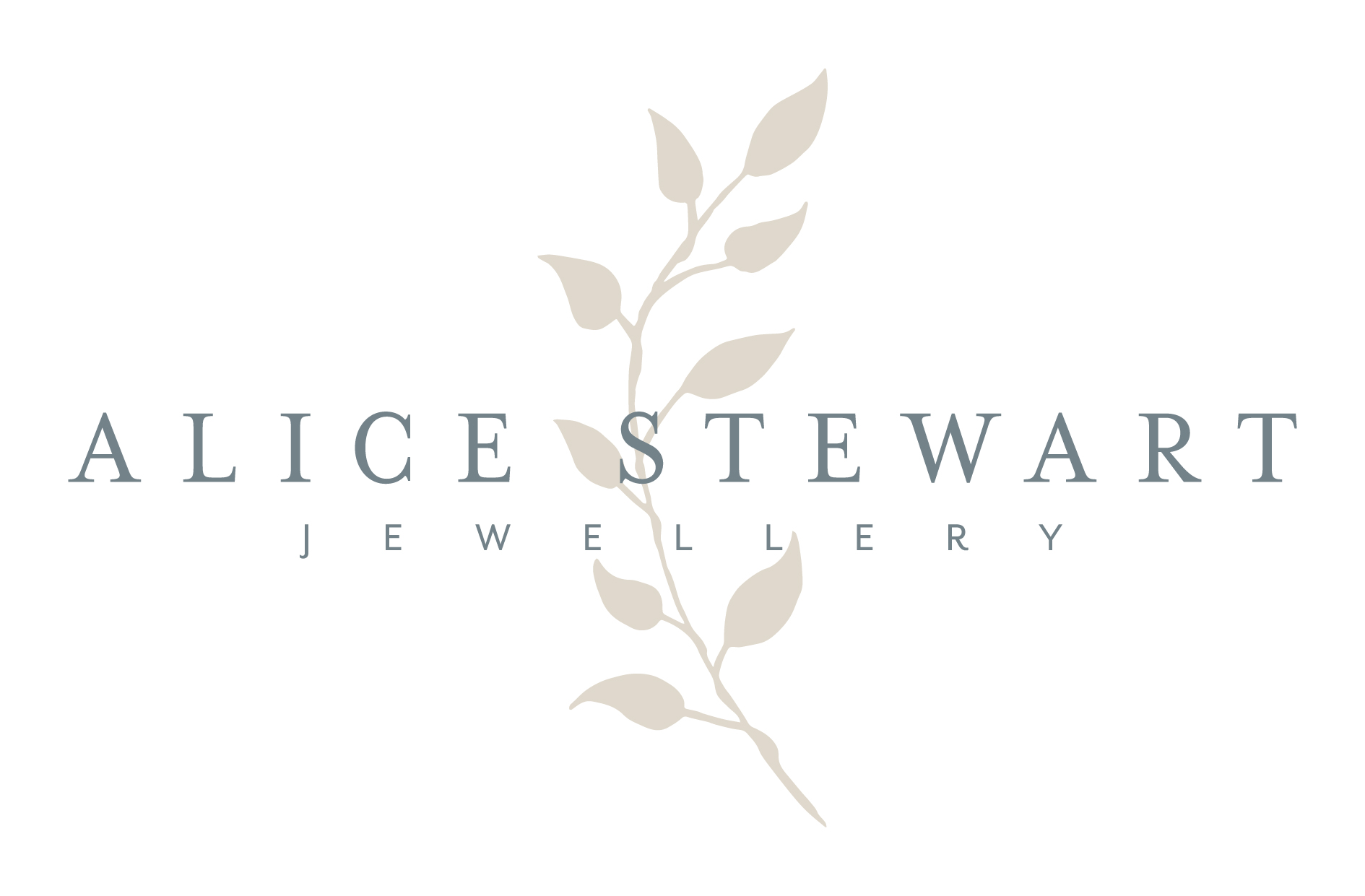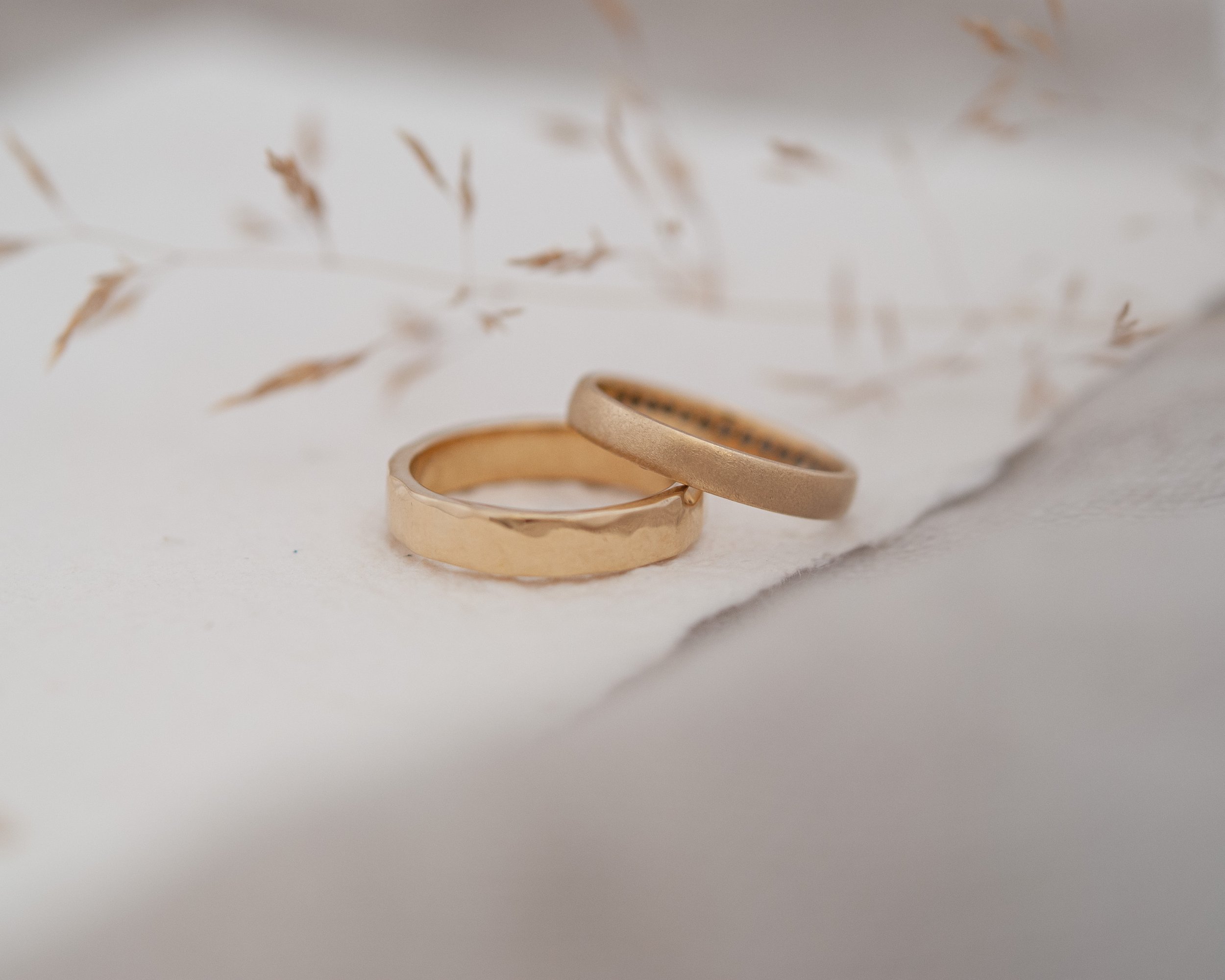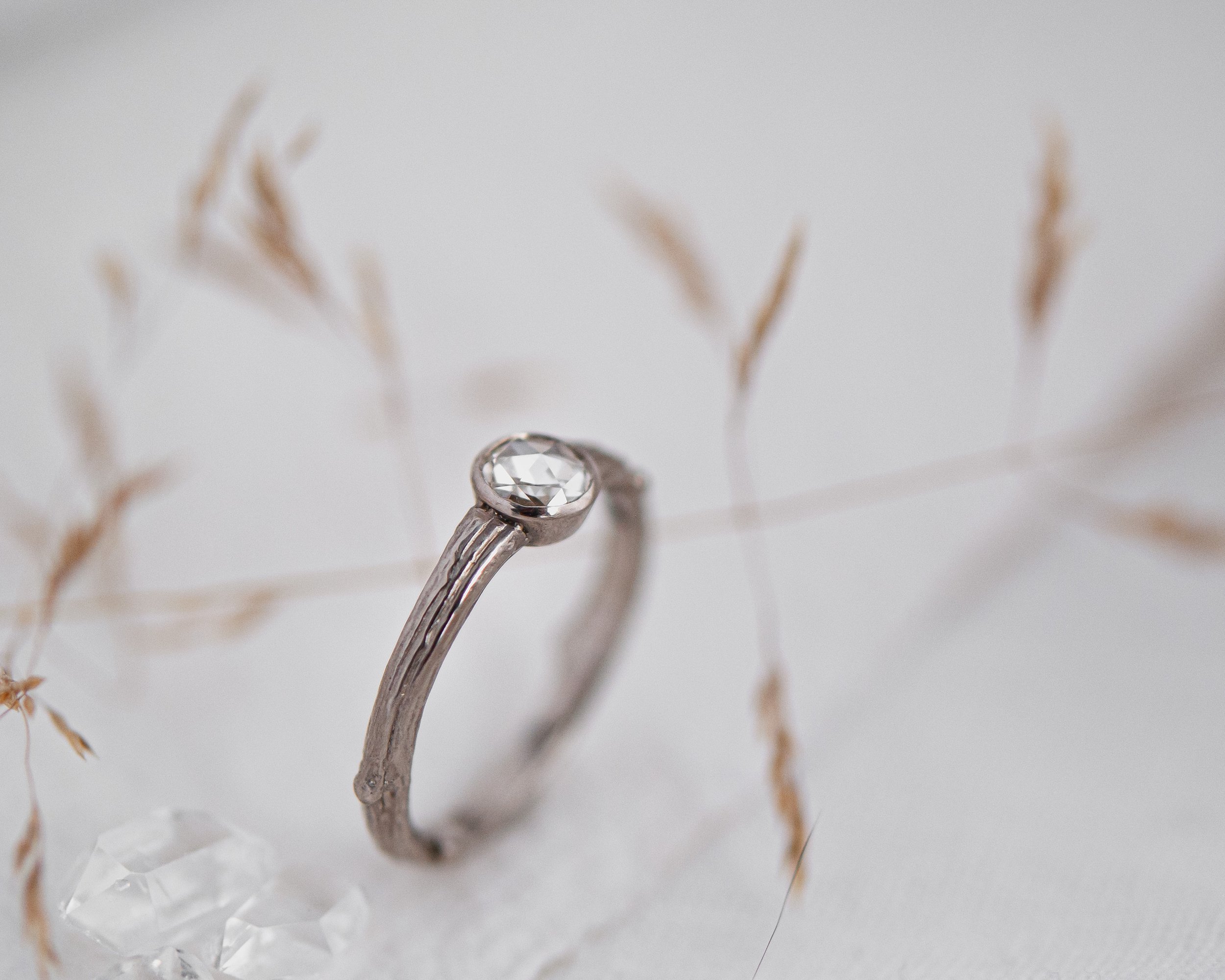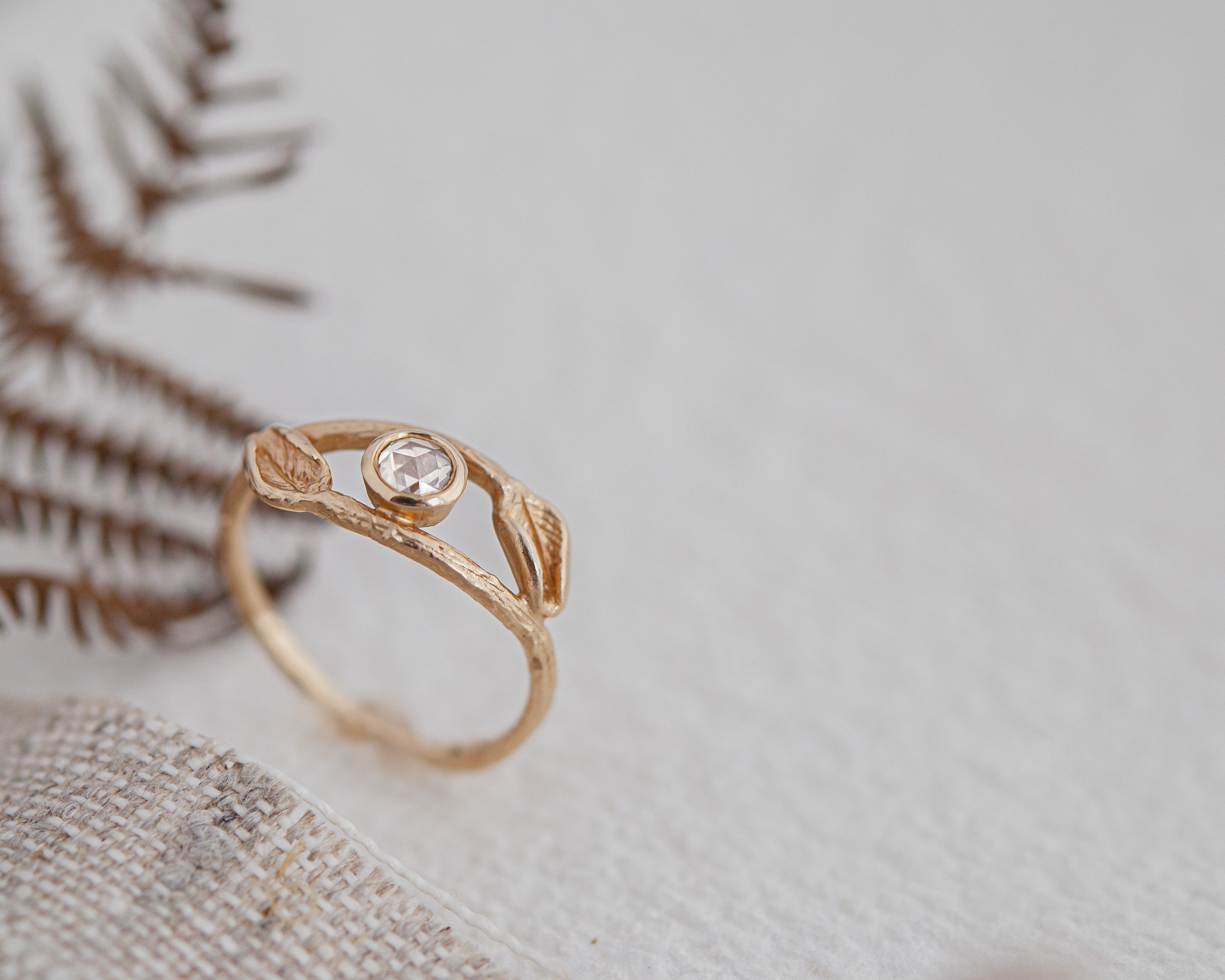Choosing a metal for your engagement or wedding ring

Choosing the right metal for an engagement ring or wedding ring is an important decision to ensure that you end up with a ring that suits you/your partner, your lifestyle and one that you’ll cherish forever. You’ll need to consider the look and finish of the metal, the hardness and durability and if it is suitable for the type of diamond or gemstone you may be incorporating into the ring design.
Gold, white gold, rose gold, platinum, silver…there is a precious metal for all budgets and style preferences, but the possibilities can often feel overwhelming. So here is my simple ring advice guide to the factors you’ll need to consider and the various metals, to help you make that all-important decision and choose the perfect wedding ring or engagement ring for you:
How to Choose the Right Metal for Your Engagement Ring or Wedding Ring
Style
When it comes to choosing an engagement ring, firstly focus on determining your partner’s style’ as well as the stone choice that best suits it’ before picking the metal and colour to complement that style. Think about the sort of jewellery your partner generally wears. Do they prefer:
Vintage/unique – do they like vintage or unique clothes for example?
Subtle and simple – do they prefer something more simplistic and minimal?
Classic – do they like a traditional style of engagement ring?
If they are drawn to something that’s one-of-a-kind, a bespoke engagement ring may be the perfect fit if you know they have their own personal style.
14ct yellow gold twig texture engagement ring
Colour and Lifestyle
It’s important to consider the colour and tones that your partner prefers:
Are they drawn to silver-tones? If so, then a white gold or platinum ring would be good options.
Yellow gold or rose gold are great engagement ring choices if they tend to go for warmer tones.
Think about your partner’s lifestyle, their hobbies and how hard-wearing the engagement ring needs to be, will they be wearing it every day or need to remove it for work?
Once you’ve considered all the above, here is some information about each of the metals available to help you decide:
Gold
Gold is an extremely versatile precious metal, and it mainly comes in the colours white, yellow, and rose. The standard measurement of gold is a carat (abbreviated to ct) which is divided into 24 parts. Pure gold is 24ct, meaning 24 out of 24 parts are gold.
Pure gold is very soft, so it’s combined with other metal alloys to increase its strength. The most common are 18ct (75% gold), 14ct (58% gold) and 9ct (about 40% gold). The remainder is made up of other metals to create strength in the metal. Each type of gold has a different look, and the higher the gold content the richer the gold colour. (See image to compare 9ct, 14ct & 18ct).
Strength & Durability of Different Golds For Engagement Rings and Wedding Rings
9ct Gold Rings
The main difference between 9ct gold and golds with a higher carat is the precious metal content. 9ct gold contains 40% pure gold vs 75% pure gold in 18ct gold. The remainder is an alloy of various metals, which may include copper, zinc, silver, palladium, or platinum, depending on whether it’s a yellow, rose, or white gold piece. An 18ct gold piece will generally be more expensive than an equivalent 9ct gold piece, as it contains twice as much pure gold. So, a 9ct gold ring is a good option if you’re looking for something in a lower price bracket and great if you prefer a lighter, more understated look. If you want something with a brighter yellow look, think about 18ct. Generally, 9ct gold is tough enough to survive a lifetime of wear, but you will need to take care of it to avoid any tarnishing over time. Also, while 9ct gold is technically harder than 18ct gold, over a long period of time it can be less resistant to knocks and scratches, but if you look after the ring over the years, it’s still a great option.
14ct Gold Rings
14ct is a popular choice for engagement rings and wedding rings due to its perfect balance of durability, affordability, and appearance. It's a bright gold that can handle everyday wear and is low maintenance to care for. While 14ct gold isn’t as durable as platinum or palladium, it’s more than durable enough for the average person. It’s also slightly more durable than 18ct gold, making it the better choice if your fiancée-to-be has an active lifestyle or works with their hands. It’s the metal I use the most for wedding and engagement rings; it’s long-lasting and maintains its shine through the years. The silver and copper in the alloy strengthen the metal’s structural integrity which means it’s unlikely to lose its shape or scratch. It’s also unlikely to fade, as the amount of gold it contains will stave off tarnishing for years. The higher carat a piece, the less likely it will be to tarnish.
18ct Gold Rings
18ct gold’s biggest advantage is its purity. As the purest form of gold that’s practical to use in an engagement or wedding ring, an 18ct gold ring offers the beautiful appearance of near-pure gold with most of the practical benefits of an alloy. This extra purity can be especially obvious with 18K yellow or rose gold, which tends to show a warmer, more vibrant tone in 18ct than in 14ct gold. The higher purity level of 18ct gold also makes it less likely to trigger skin allergies than 14ct or 9ct gold. Although 18ct gold still contains nickel and other alloy metals, they’re only present in small quantities, making the risk of contact dermatitis or other allergic reactions very small. If you’re not concerned about durability and want the purest form of gold that’s still practical for an engagement or wedding ring, 18ct gold can be a good choice. Just be aware that this type of gold can and often does scratch easily, so will require more care over time.
Yellow Gold Rings
Yellow gold has a beautiful warmth to it, and shows off the brilliance of diamonds wonderfully, as well as complementing many precious gemstones. It’s a popular choice engagement ring choice for those who prefer a warmer tone to their jewellery.
Above - top - 18ct yellow gold polished texture wedding ring, middle - 14ct yellow gold twig texture wedding ring, bottom - 9ct yellow gold polished texture wedding ring
White Gold Rings
Naturally white gold has a more subtle steel-like colouring to it which looks wonderful in a more organic natural engagement or wedding ring design as the textures and details stand out in a subtle way. If you prefer a brighter more silver-looking finish, white gold can be plated with rhodium, but it’s likely you will need to re-plate it over the years. Personally, I love the natural finish of white gold without any plating.
14ct white gold twig texture - natural without plating
Rose Gold Rings
Unique and romantic, rose gold has a warm, pink hue created by combining yellow gold with a copper alloy. The overall percentages of metal alloys are the same for rose gold as they are for yellow or white; it’s just a different mixture of alloys used. It’s a lovely option for vintage style rings. Sizing is important with rose gold so it’s best to get this right first time as re-sizing can be difficult with rose gold.
14ct rose gold twig texture
Platinum Rings
Platinum is durable and is the least prone to scratches of all the metals, making it a good option for an engagement ring or wedding ring if you or your partner have a very active lifestyle. Platinum is also naturally hypoallergenic, for those with sensitive skin. Its bright finish will not fade or dull over time, making it a hassle-free option for a white metal.
Above - top - 18ct white gold twig texture wedding ring, natural un-plated, bottom - platinum polished texture wedding ring
Silver Rings
Silver is one of the most affordable of the precious metals. Sterling silver, often used for jewellery is pure silver mixed with copper or other metal to make it more durable. But even though it is harder than pure silver, it is still one of the softer metals. I wouldn’t generally recommend silver as a metal for a wedding or engagement ring as it tarnishes easily and is prone to scratches. It’s also not the strongest choice of metal for holding stones/diamonds for a ring that will generally be worn daily. However, if you or your partner have a job/lifestyle whereby your ring will be removed for most of the day, and you’d prefer it in silver, we can discuss options.
Metal Finishes for Engagement Rings and Wedding Rings
All the different metal choices can come in different finishes depending on the look you prefer for your ring. Polished and matte are the main finishes, with the design also dictating if the ring band will be textured, hammered or have a more organic natural feel to it. These elements will give the ring a very different feel and even give the metal colour a slightly different tone, with matte being more subtle and understated, and polished brighter and more eye catching.
No matter what metal you choose for your ring, make sure that you take good care of it over the years. Avoid wearing it in water or exposure to harsh chemicals. Polish it regularly to keep it looking its best.
With a little research and planning, you can find the perfect precious metal for your engagement or wedding ring and it will be a cherished keepsake of your love for years to come.











